Informative
Professions
Helen Yin, Jocelyn Liu
01/30/2021
Around the world, the conditions and lifestyle that comes with being a doctor heavily varies. There are over 190 different countries, each with unique experiences and benefits to offer and there are endless opportunities for where you want to practice.
Canada
Let’s first take a look at what it’s like to be a doctor here in Canada, as a baseline for comparison.
Salary: On average around $300,000 CAD, varies depending on location, experience, specialty.
Work Hours/Week: 50 hours a week on average
Burnout Rate: 1 in 3 Canadian Doctors are burned out or depressed, and 10% of doctors have considered suicide.

One of the largest concerns for doctors in Canada is the relatively lower salary and higher tax rates than those of the United States. Many dislike the fact that they lose nearly half of the money they make before they even get to spend it.
However, Canada is overall a pretty great place to work as a doctor. Canadian doctors are well respected, well paid (with a decently stable salary), have decent work hours, enjoy a good work-life balance, and are protected by a very strong malpractice insurance (in fact, the Canadian law advises you against suing for malpractice and less than 5% of patients win their cases). What’s more, the average Canadian medical student will face nearly half of the student debt that an American student would.
Canada also has a high demand for doctors. Although many major cities like Toronto and Vancouver have numerous job opportunities, the demand is much higher in more remote and rural areas. It’s estimated that 4.5 million Canadians don’t have a family doctor, and this will likely remain the case for a while.
United States
Salary: The median salary is around $413,000 CAD, varies depending on location, experience, specialty.
Burnout Rate: The burnout rate is around 42% in the U.S, 32% of physicians are depressed, and 8% have thought about suicide in the past 12 months.

Being a doctor in the US is fairly similar to Canada in various ways. The education and pathway to becoming one is almost the same, and their salaries are alike. However, due to the health insurance industry being private, corporations and private companies control doctors and patients. As a result, American physicians have to take on more responsibility than, say, a Canadian one. For instance, the average American doctor now has to spend 16% of their time going through paperwork. The US system also places greater emphasis on specialization, since Americans are free to choose their providers without going through a family doctor first. Overall, working in the US will allow you to work in great facilities with innovative technology, but high amounts of student loans, large amounts of paperwork and documentation, as well as the fear of being sued can be a cause of stress.
Mexico and Central America
This area encompasses a variety of different countries and territories, which results in a large range of different situations for doctors. Starting off with Mexico; many US doctors and their patients chose to practice/get treated in Mexico, because there are more financial benefits. In fact, doctors can make up to three times more in Mexico than doctors in the states within the private health insurance industry. The cost of living is also half as much! Medical tourism is encouraged in Mexico and many Latin American countries, although hospitals will be much less advanced than their northern neighbors (for example, they lack the resources to combat a rising diabetes problem). That being said, it is evident that Mexico is starting to industrialize, as the country is starting to face more first-world country illnesses and diseases such as diabetes and hypertension.
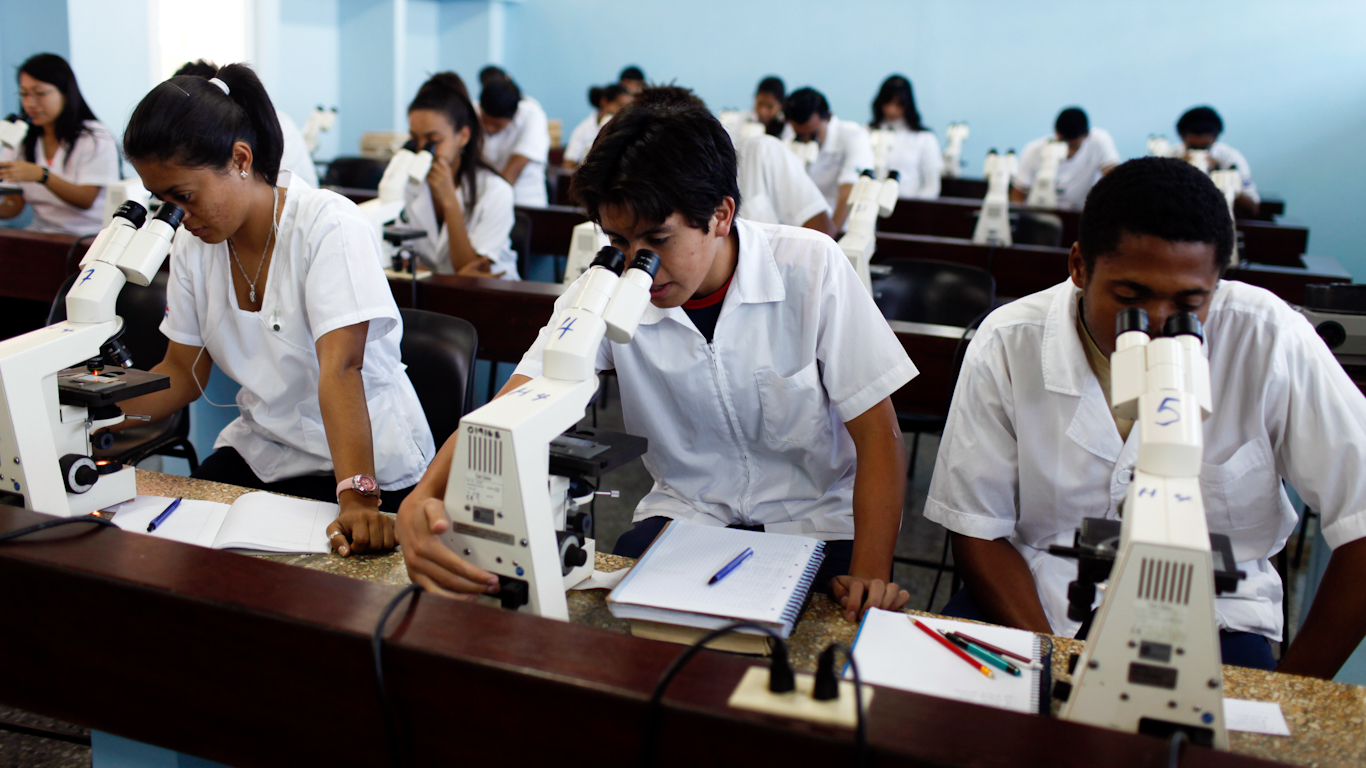
A very popular place for doctors to study and practice is Cuba. The “robust” healthcare system, free medical school programs, the wide range of opportunities, and emphasis on community is more than enough incentive for aspiring doctors to study there. Some of the issues that medical students and doctors face include the more restricted access to drugs, equipment and expensive tests, a much more military-like school environment (eg. cold showers, crammed “dorms”, mess hall meals, etc.) and isolation from family and friends. However, if you can overlook that, Cuba offers one of the best doctor experiences in the world.
South America
The healthcare facilities in South America greatly vary depending on your specific country or region. Working conditions and physician compensation in large cities such as Rio de Janeiro, Sao Paulo or Buenos Aires are generally much better than rural communities where there may be widespread poverty and poor access to healthcare. Conditions will also vary depending on the economic and political state of the country, but overall, salaries are significantly lower than those in Canada, but the cost of living is also much lower. Colombia is considered to have the best healthcare system in South America, ranking #22 in the world according to the World Health Organization, which is higher than both Canada (#30) and the US (#37). In general, choosing to be a doctor in the safest cities of South America can be quite rewarding.
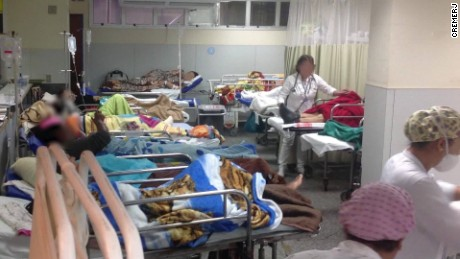
Asia
Asia is such a broad and diverse continent, which means healthcare varies drastically across Central Asia, South Asia, East Asia, Southeast Asia and West Asia.
Central Asia is a region that comprises 5 former soviet states: Kazakhstan, Kyrgyzstan, Tajikistan, Turkmenistan, and Uzbekistan. These countries are undergoing immense healthcare reforms as a result of having assumed the healthcare systems of the Soviet Union. The large number of medical schools, centers and institutes in this area are helping to advance public health in these regions. That being said, doctors do not have it easy in these countries. Let’s take a closer look at Kazakhstan. Doctors study for 7 years to get a medical license, but earn around $300 a month (below the average national pay), which is less than many of those who have minimal education. Although it is common practice for patients to pay doctors even before treatment, to ensure the best care, this is not enough for doctors to live very comfortably. The low earnings of doctors is very consistent throughout central Asia as a lingering effect of the Soviet healthcare system.
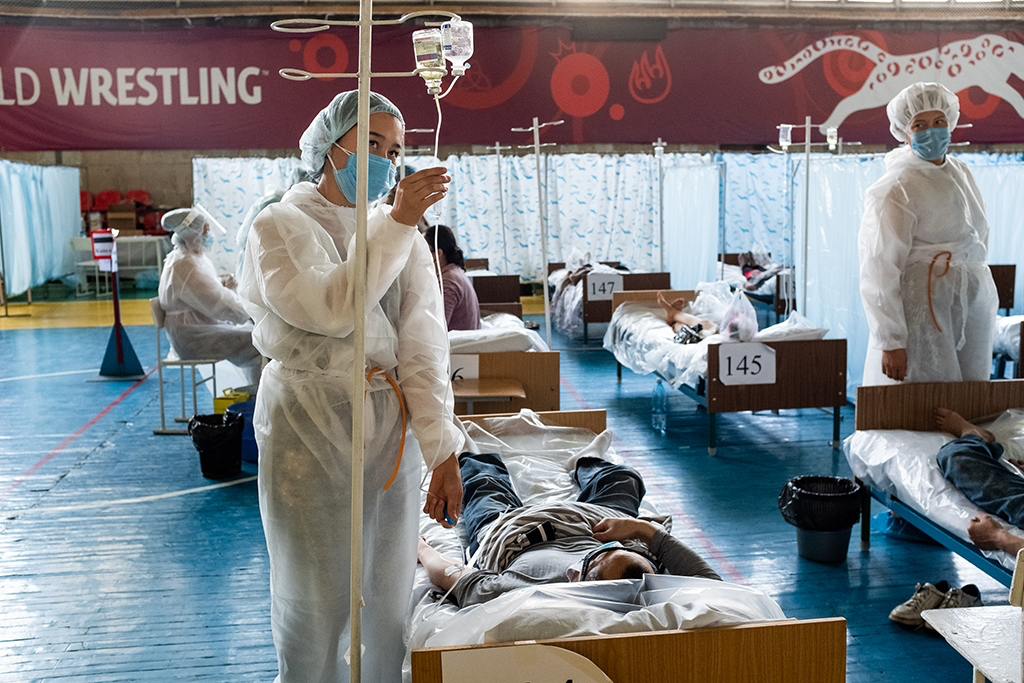
Southern Asia is generally considered to be composed of 8 countries: Afghanistan, Bangladesh, Bhutan, India, Maldives, Nepal, Pakistan, and Sri Lanka. Most South Asian countries and regions face major accessibility issues, with there often being a shortage of qualified doctors. Thus, doctors are incredibly important there. While conditions will vary depending on the specific area, overall, they don’t have access to much of the technology we have in Canada. Doctors are highly respected there, and while the salary is significantly lower than in Canada, it’s still much higher than the national median and doctors are able to live very comfortably. However, in the past, there have been frequent cases of violent assaults against doctors in many South Asian countries.
East Asia typically refers to the region that encompasses Japan, Mongolia, North Korea, South Korea, China, etc. Generally speaking, there is a high demand for doctors in East Asia, though there aren’t many incentives to work there, and you must be very well versed in the region’s dominant language. For example, Japan has a high demand for doctors because of the decrease of the labour force and increase of seniors. However, because many Japanese people cannot speak English, it is much more difficult for English speaking doctors to integrate in their society. Many doctors are also overworked and underpaid, and are at high risk of being sued by unsatisfied family members.
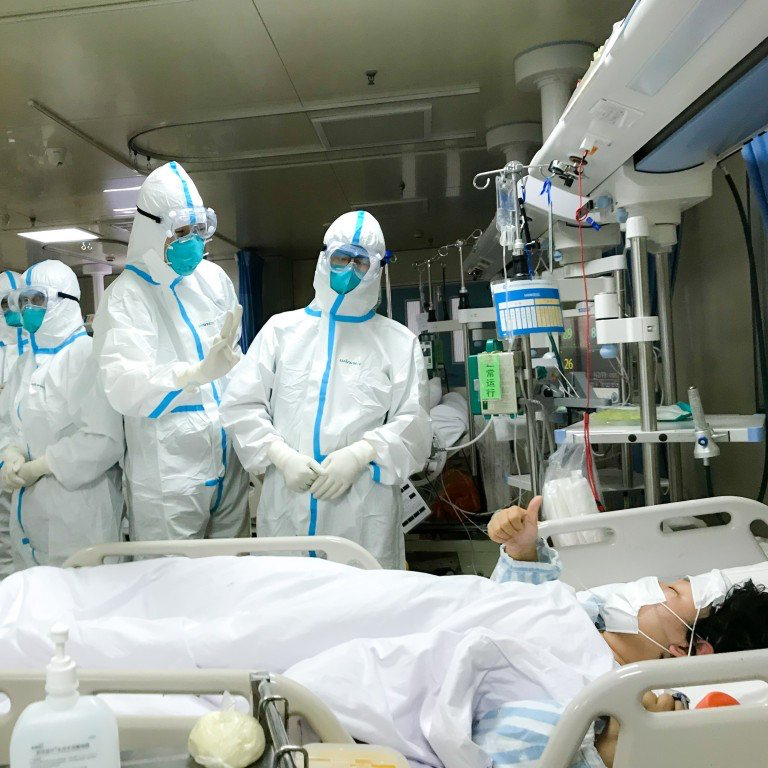
Unsatisfied family members take a much more violent approach in China. Every year, over 100,000 cases of violent assaults on doctors and nurses are reported, and 85% of doctors report violence in their workplace. This prominent social issue is terrifying for all in the healthcare industry, so much so that many hospitals have been teaching self defense to their staff. Although studying medicine usually guarantees a very stable job, the job satisfaction and pay are low, and the burnout rate is high. In fact, entering the healthcare system is so unrewarding, the demographic for doctors in China is continuously aging as universities fail to attract new students. Doctors are exhausted and are constantly in great danger. In South Korea, becoming a doctor is very difficult for foreign people. The salaries are also relatively high, in comparison to other jobs, although doctors have very long work hours. There is however, a shortage of doctors in South Korea in rural areas, which opens up many (low paying) opportunities, should one obtain a license there. All in all, working in East Asia usually opens you up to many opportunities due to a shortage of doctors, but also many dangerous and unappealing disincentives.
Southeast Asia is a small area of Asia, which includes countries like Brunei, Cambodia, East Timor, Indonesia, Laos, Malaysia, Myanmar, the Philippines, Singapore, Thailand and Vietnam. As a whole, there is a shortage of general physicians (GPs), and the doctor to population ratio is often very low, opening up many opportunities for doctors in the mostly private health care systems. However, many of these countries have excellent healthcare systems. Thailand’s healthcare system is ranked 6th in the list of healthcare quality in a list published by CEOWORLD in 2019, and has received worldwide recognition for their system. Although sleep deprivation (and subsequently car accidents) and mental health problems are very prominent among doctors, doctors do have a good income, respectable job and generally a comfortable life. This is not true, however, in understaffed state hospitals and rural areas, where doctors are overworked and experience conflicts with patients. Most choose to work in Bangkok, or private hospitals. Singapore is another Southeast Asian country with an excellent (and envied universally) healthcare system. Although becoming a doctor is tough and competitive (like any other country), many Singaporean students still choose to study medicine, as the career is extremely rewarding. What’s more, Singapore greatly encourages foreign doctors to seek opportunities there.
West Asia is a very vast region, which refers to places like Iran, Iraq, Jordan, Lebanon, Kuwait, Oman, Palestine, Qatar, Saudi Arabia, Syria, Turkey, the United Arab Emirates (UAE) and Yemen. The differences in healthcare quality is very dramatic in this area, where countries like Saudi Arabia have an advanced and well functioning system, but places like Syria have been greatly affected by war. Saudi Arabia, along with Egypt and UAE, all have well developed systems, ranking just behind some of the more developed countries like New Zealand.
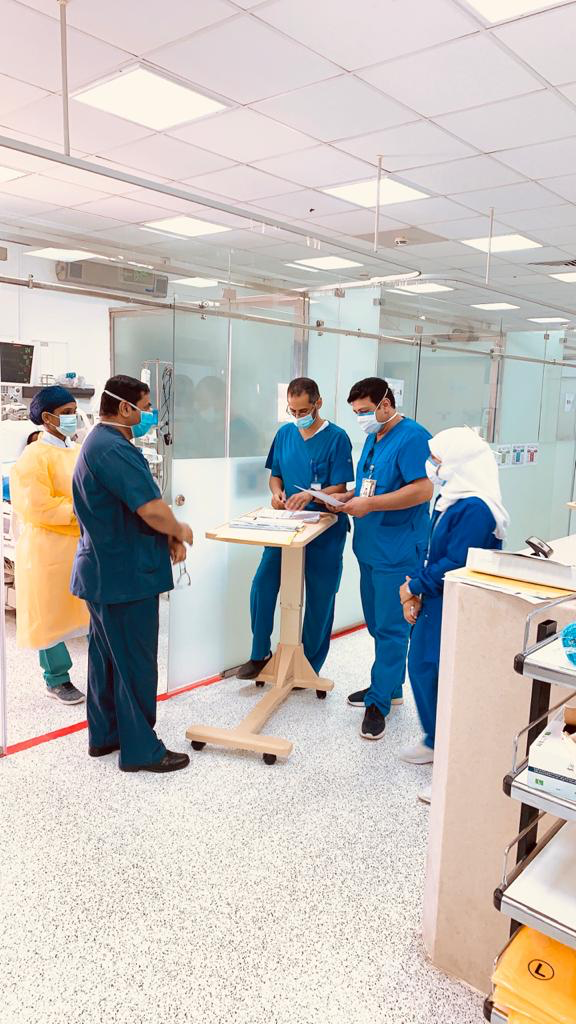
Saudi Arabia’s system is sometimes compared directly to these countries, as they have imported a lot of advanced technology. They look for (more experienced) doctors who speak any language, and there are many opportunities for growth and experience. However, it should be noted that there is prominent and deep rooted sexism in Saudi Arabia. Countries like Syria, Iraq, and Yemen are considered some of the most dangerous places in the world for medical professionals. There are bombings, gunfire, and all sorts of attacks targeting hospitals, which resulted in nearly 600 medical staff in 19 countries being injured in 2 years, according to the WHO. Being a doctor in these places can be traumatizing, and difficult.
Africa
Northern Africa is the region that covers Algeria, Egypt, Libya, Morocco, Sudan and Tunisia. While the healthcare systems in Northern Africa still have many areas for improvement, relative to many of the countries that surround the region, overall, their facilities are fairly good. Almost all the countries in Northern Africa are frequently found on lists of the top 10 healthcare systems in Africa. Overall, the healthcare systems are reasonably accessible, and though there are still many shortcomings, their facilities are much better than many of the countries south of the Sahara, and there is always room for improvement when it comes to quality. As a doctor, while pay may not be too high and technology may be limited, it’s an incredibly rewarding experience, with fairly good working conditions.

Sub-Saharan Africa is an area encompassing all regions south of the Sahara, including various countries from Mauritania to Madagascar. In general, working conditions in Sub-Saharan Africa are not always ideal, with little technology and frequently poor facilities. Nonetheless, working or volunteering as a doctor, even if just temporarily, can be incredibly rewarding. According to the World Health Organization, in 2013, sub-Saharan Africa was short of 1.8 million doctors, which is expected to rise to 4.3 million by 2035. There are also major accessibility issues, where a small fraction of individuals will receive quality health care, while the majority lack accessibility to even basic care. However, it’s important to note that working as a doctor requires a lot of hard work, as hospitals are often understaffed.
Oceania
Oceania encompasses 14 countries including Australia, Micronesia, Fiji, New Zealand, Palau, Papua New Guinea and more. Since it spans a vast amount of geographical regions and cultures, it’s difficult to draw generalizations about the overall continent. Australia, as well as New Zealand, are often considered great places to be a doctor. In both countries, salaries are high, conditions are good, and the work environment and hours create high job satisfaction. Both countries need more doctors in rural areas, and the job is generally quite rewarding, and while salaries aren’t as high as some other countries, the stress from the job tends to be significantly less as well. In terms of the smaller island nations, the healthcare systems tend to be a little worse, due to a poorer economy. However, the landscape and beauty of coastal locations and people can make it an incredibly valuable experience, and frequently doctors and medical students may have the opportunity to work abroad for a small period of time, so many of the countries in Oceania could be a good choice.
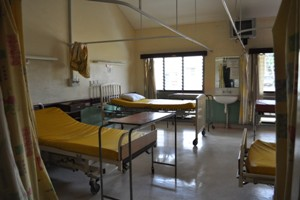
Europe
Generally speaking, being a doctor in Western Europe means you’ll have a well-paying, respected job, while specific conditions will vary depending on the country. The Netherlands, for instance, is frequently regarded as one of the best countries to be a doctor, as they have a high salary, low working hours and many holidays. The UK, Germany and Belgium also have some of the highest salaries in Western Europe, though doctors will have much longer working hours. In general, if you’re interested in working as a doctor in Western Europe, you’ll be ensured a good salary and working conditions, with innovative technology.
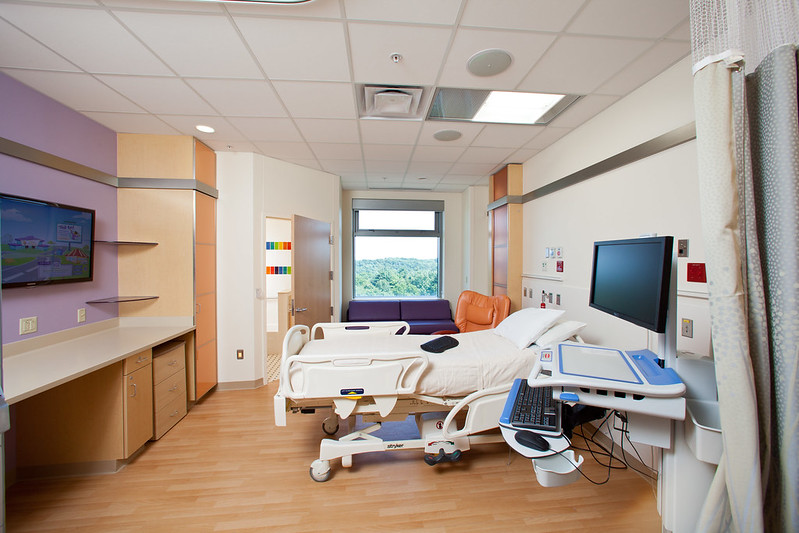
Being a doctor in Eastern Europe can sometimes mean low pay, and as a result, many doctors are dissatisfied with their job. However, there has been an influx of students studying abroad in Eastern Europe, due to there being reputable medical schools there, with low tuition costs. In addition, the cities are very affordable and students can study and learn in English!
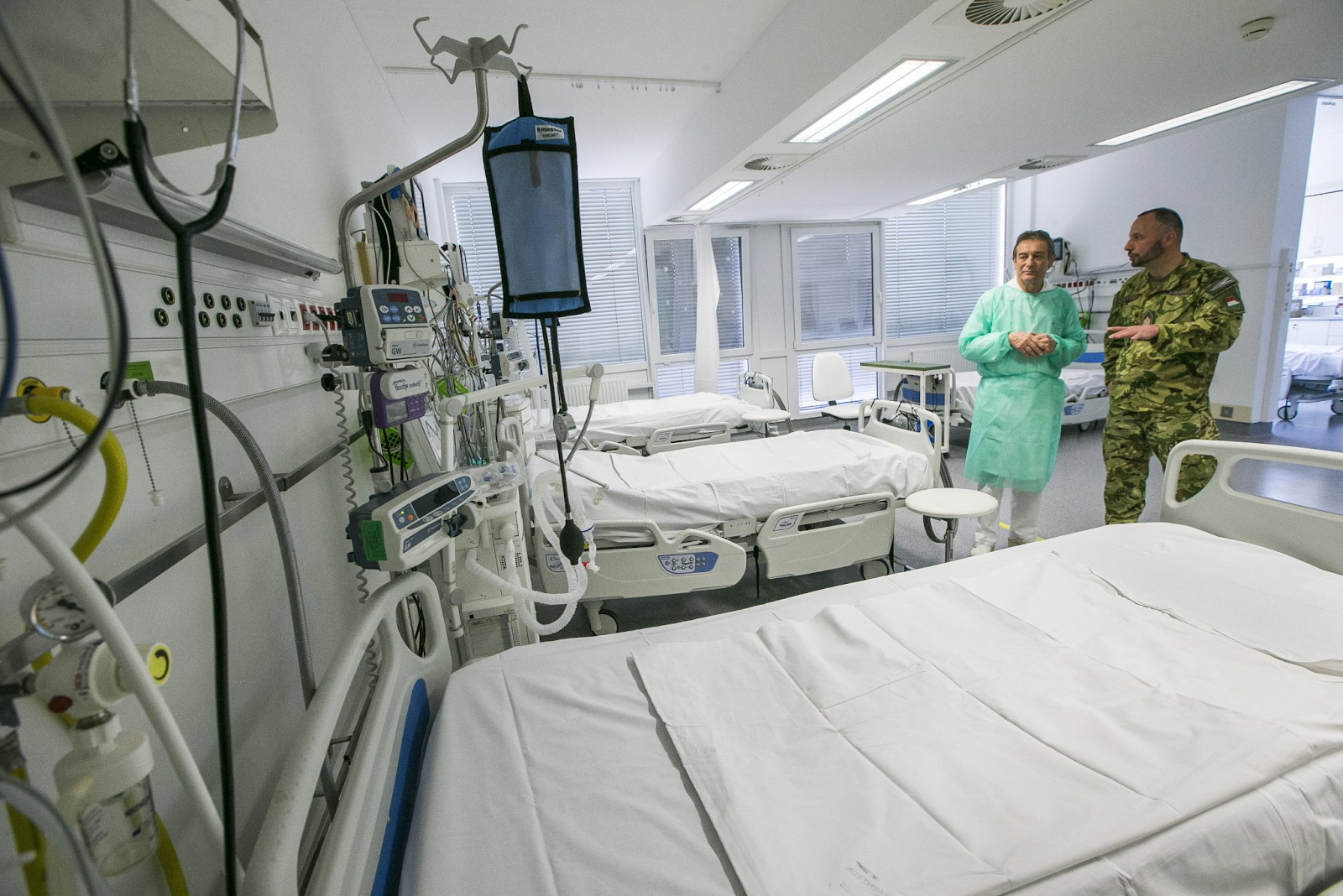
Overall, Scandinavian countries have good working hours, though income is often lower than other developed countries. However, there is a good work-life balance, and doctors are capable of having a good private life. Working conditions and facilities are good and the healthcare system present means that there are minimal issues regarding accessibility.
Sources
- https://japantoday.com/category/features/health/globalising-japans-medical-care
- https://www.japantimes.co.jp/news/2008/04/12/national/hospital-doctors-feeling-the-strain/
- https://www.sixthtone.com/news/1003446/why-chinas-young-doctors-want-out-of-the-system
- https://www.bbc.com/news/world-asia-china-50940827
- http://www.koreabiomed.com/news/articleView.html?idxno=114
- http://www.koreaherald.com/view.php?ud=20200811000941
- https://www.aetnainternational.com/en/about-us/explore/living-abroad/culture-lifestyle/health-care-quality-in-southeast-asia.html
- https://www.bangkokpost.com/life/social-and-lifestyle/1534978/whats-it-like-being-a-doctor-
- Doctor Series medical council of Thailand
- https://www.todayonline.com/world/overworked-doctors-thai-state-hospitals-soldier-despite-24-hour-shifts
- https://www.vox.com/policy-and-politics/2017/4/25/15356118/singapore-health-care-system-explained
- https://www.todayonline.com/singapore/why-allure-practising-medicine-remains-strong
- https://www.scmp.com/comment/letters/article/3012025/lessons-hong-kong-how-singapore-tackled-its-doctor-shortage
- https://www.africanexponent.com/post/7167-top-10-african-countries-with-best-healthcare-system-2020
- https://www.health.gov.au/initiatives-and-programs/doctorconnect/about-working-in-australia/why-work-as-a-doctor-in-australia#:~:text=Our%20quality%20health%20system%20and,doctors%20to%20work%20and%20live.&text=You%20are%20able%20to%20earn,care%20and%20world%2Dclass%20education.
- https://www.bmj.com/content/367/bmj.l6972
- https://worldextrememedicine.com/blog/2018/09/fiji-medical-dream-comes-true-courtesy-of-world-extreme-medicine/
- https://content.wisestep.com/highest-paying-countries-doctors/
- https://www.medscape.com/slideshow/2019-international-compensation-report-6011814#8
- https://www.aetnainternational.com/en/about-us/explore/living-abroad/culture-lifestyle/health-care-quality-in-southeast-asia.html
- https://www.cma.ca/sites/default/files/pdf/Physician%20Data/34-TrendData-e.pdf
- https://www.statista.com/statistics/857991/physicians-average-working-hours-per-week-in-canada-by-activity/#:~:text=2017%2C%20by%20activity.,to%2050.5%20hours%20in%202017.
- https://www.cmaj.ca/content/190/43/E1293
- https://www.ama-assn.org/practice-management/physician-health/physician-burnout-which-medical-specialties-feel-most-stress
- https://www.bmj.com/content/367/bmj.l6971
- https://vittana.org/21-canadian-medicare-pros-and-cons
- aetnainternational.com/en/about-us/explore/living-abroad/culture-lifestyle/health-care-quality-in-the-americas.html
- https://pubmed.ncbi.nlm.nih.gov/26254293/
- https://eurasianet.org/kazakhstan-hard-up-doctors-say-quick-fixes-are-not-the-cure
- https://www.quora.com/Which-country-has-the-best-healthcare-in-Latin-America-How-does-it-work
- https://journal.practicelink.com/vital-stats/physician-compensation-worldwide/
- https://www.who.int/healthinfo/paper30.pdf
- https://www.topuniversities.com/courses/medicine/why-you-should-study-medicine-eastern-europe
- https://timesofindia.indiatimes.com/india/Over-75-of-doctors-have-faced-violence-at-work-study-finds/articleshow/47143806.cms
- https://www.abc.net.au/news/2019-06-11/rates-of-violence-against-nurses-rising-rapildy/11196716
- https://www.wired.com/2016/03/students-ditching-america-medical-school-cuba/
- https://meded.med.uky.edu/latin-america